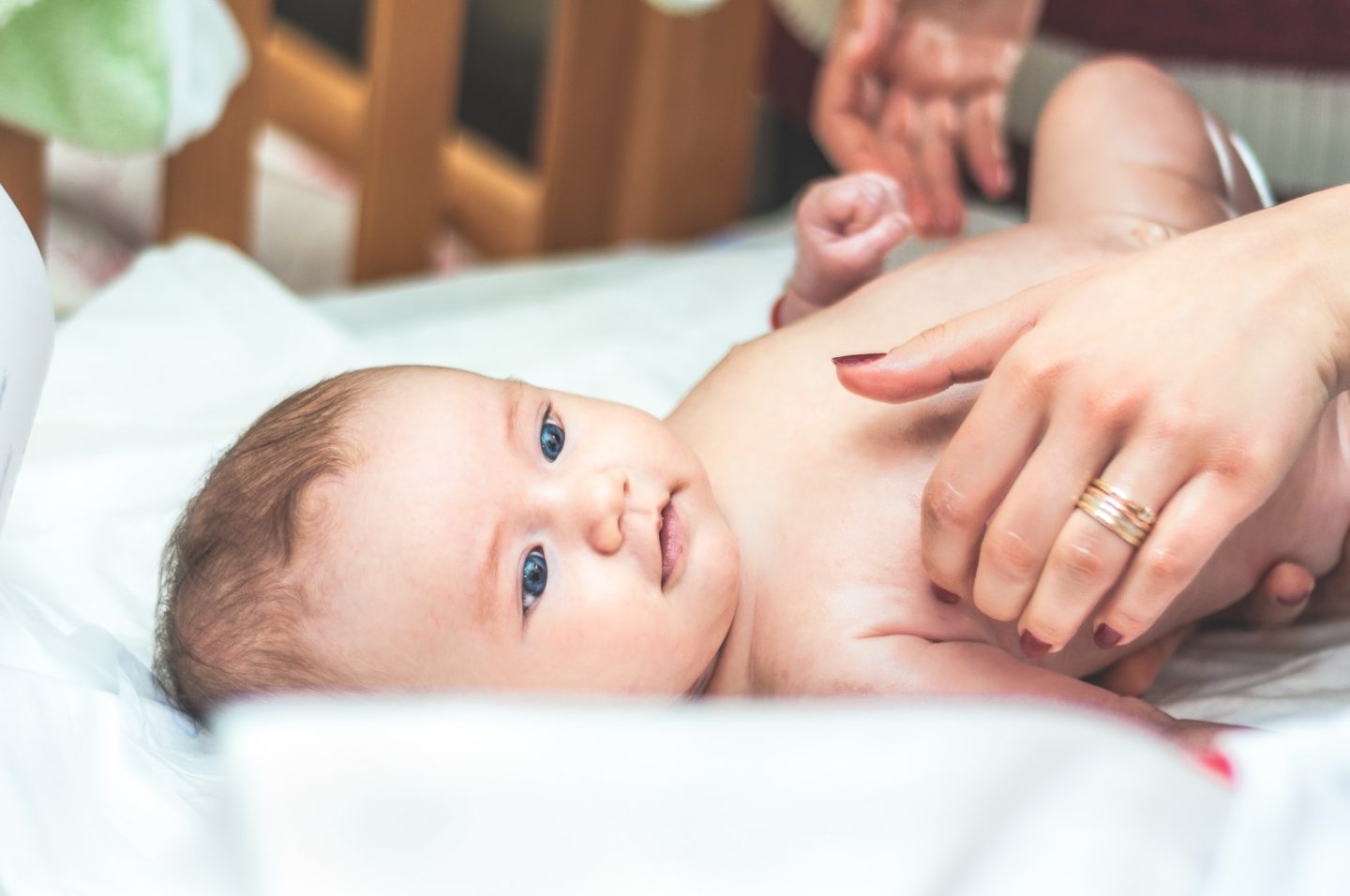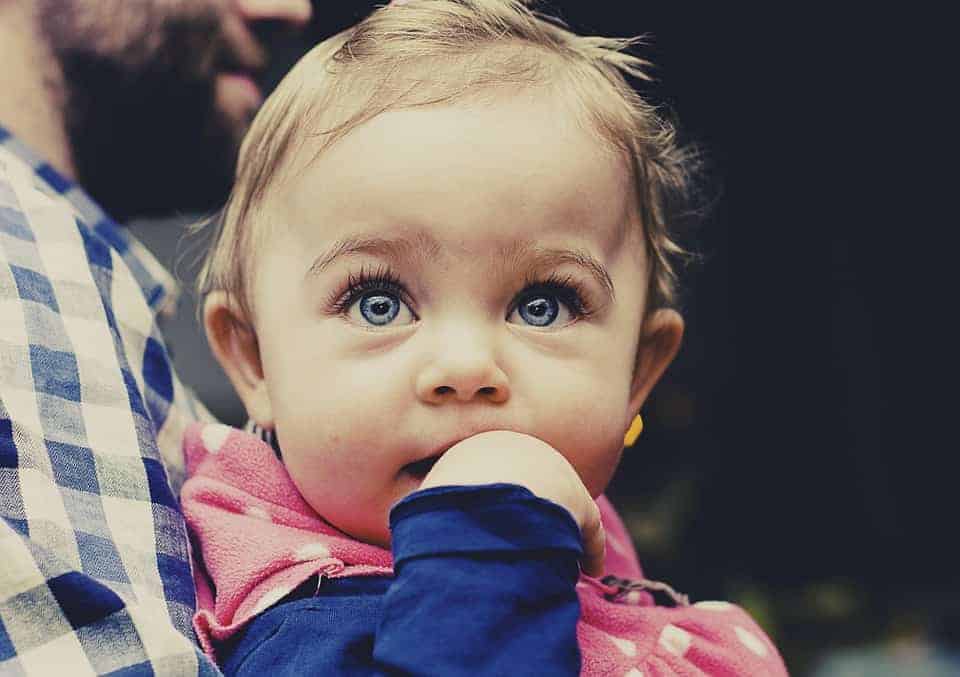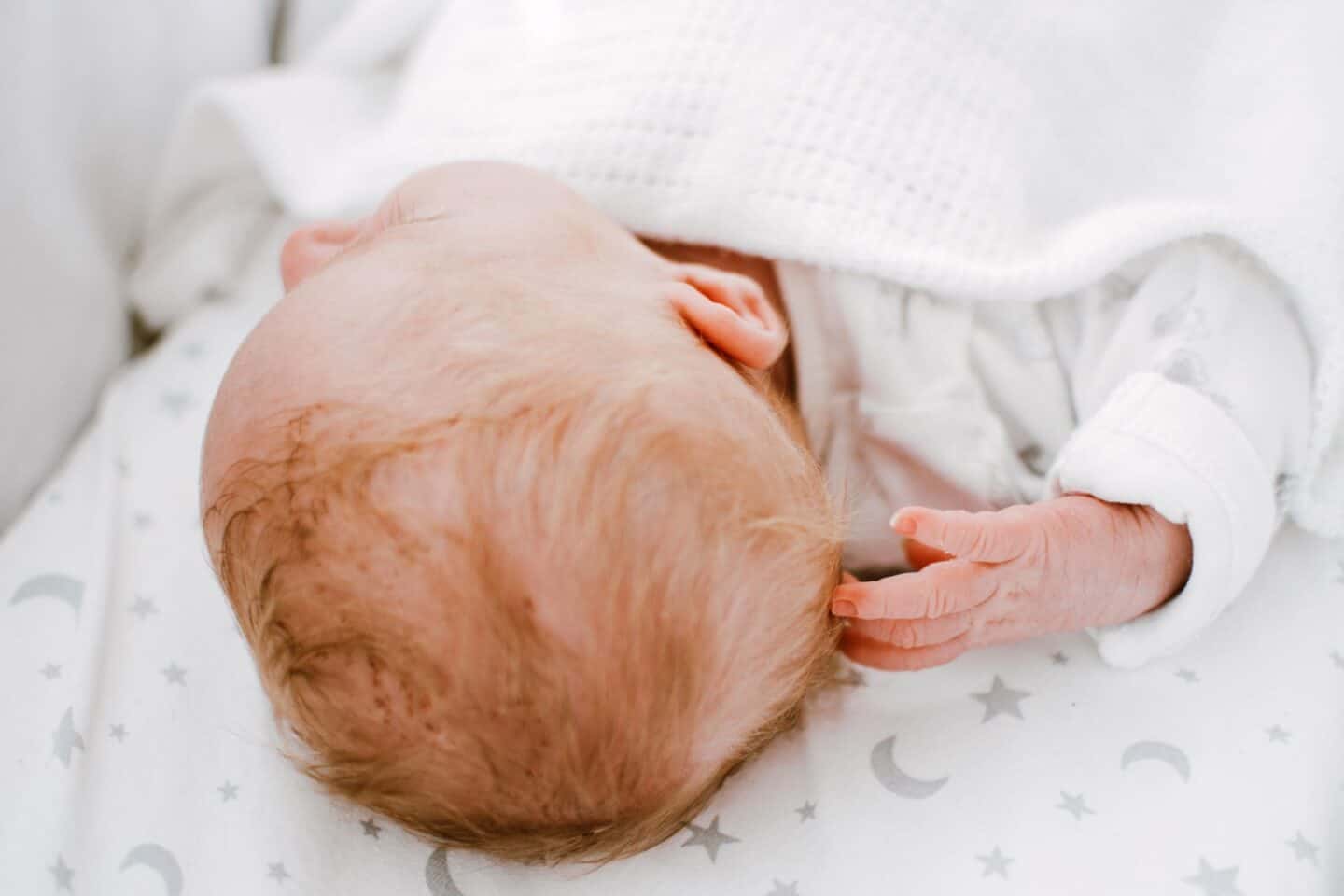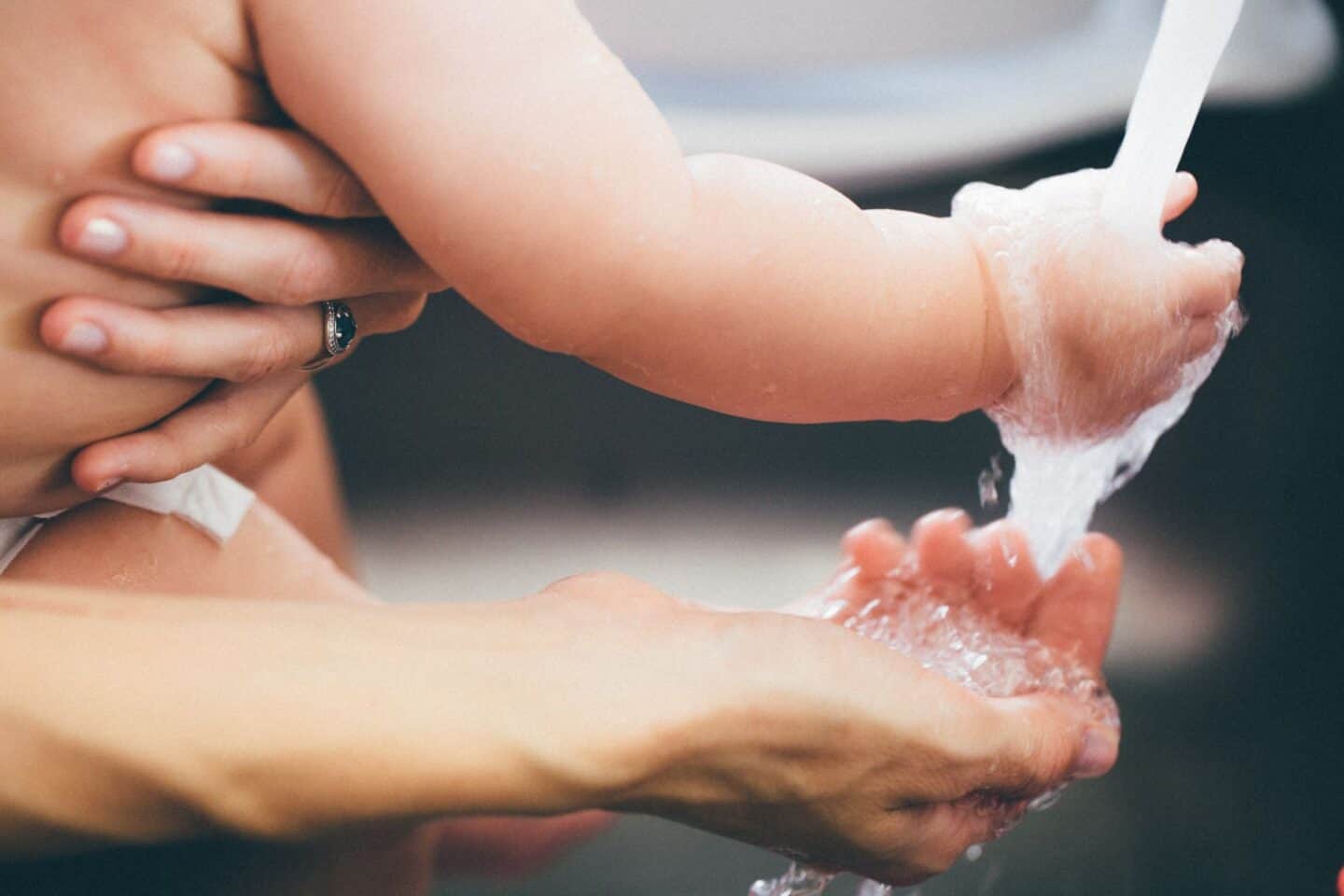I’m pretty sure as a parent you would never want to see your baby’s soft scalp covered in scales. Now, the best is for you to learn how to prevent cradle cap early on to avoid a whole lot of problems in the long run.
3 out of 5 of my babies developed cradle cap. It wasn’t until just after the 2nd where I noticed I didn’t know much of what this meant, so I tried to find out how I could treat it and even better, prevent it completely.

As an Amazon Associate I earn from qualifying purchases. The links below may be affiliate links. Please read my disclosure policy for more information.
Bringing Your Baby Home For The First Time
Bringing your bundle of joy home is a feeling that can never be replaced. It’s one of the best feelings in the world.
Despite how excitingly happy you probably feel it’s also scary, as you know that you’ll both have so much to learn from one another.
Related: How to enjoy the first week with your baby

Babies change so much daily and as a mom, you have to adjust to each of those changes.
Cradle cap is one of these things your baby will probably go through. Possibly, you might panic trying to figure out what this skin issue even is especially if you’re a first-time mom.
Is it eczema or an allergic reaction? Should you go running to the doctor?
Firstly, take a deep breath and let me tell you it’s not dangerous so, don’t worry too much. It can be treated easily in the comfort of your own home!
Want To Know Why Your Baby Is Shaking Their Head? Read This
My Cradle Cap Experience
I remember with my first child walking up one morning and realized that they were beginning to develop a crusting-looking thing on the top of their head.
It freaked me out completely; I had NO idea what it was and to be honest, I thought it would clear up on its own to later accept I really didn’t know how to deal with it.
I didn’t even pick at it or touch it because I was so scared that I’d scar my baby, or that I’d hurt them. So, I left it.
As each day passed through, I just kept repeating to myself that it would be gone by the end of the week.
It didn’t.
Due to me leaving the scalp for so long unattended it got to a point where my baby’s hair was falling out and the crusting was very noticeable!
You might like: 9 best non-toxic teething remedies to Soothe Your Baby
What is cradle cap?
Sometimes referred to as seborrheic dermatitis, it is yellow crusting usually presented on the scalp. There are possibilities that it could develop in other areas such as on the bottom or forehead.

It isn’t anything to worry about and is just a case of your baby adjusting to its life outside of the womb and it will soon find the right balance and calm down.
Is cradle cap serious?
No, definitely not. It is really common and most babies will get it at some point. If it is left untreated though, it’s more likely to get a lot worse than it needs to.
If you have other children in your household, you don’t have to worry.
Cradle cap isn’t contagious, so nobody will catch it.
There might be a time when you sigh with relief thinking you’ve completely got rid of it, but don’t get too comfortable yet as cradle cap is known to come back in bursts within a couple of weeks, with a vengeance.
You Might Like:
- The Best Age-Appropriate Chores for Kids of All Ages!
- Boomer Parenting Advice: More Outdated Than a VHS Tape
- Exploring the Decline in American Birthrates: 10 Insights from Those Who’ve Chosen Parenthood Differently
- 10 Things Moms Secretly Wish Other Moms Would Stop Doing
- Grey Hairs and Baby Cries: A HILARIOUS Look at Late-in-Life Motherhood!
What Do I do?
Please consult with your doctor if you’re worried about your child’s cradle cap or if you’re not sure it’s in fact, cradle cap.
They will be able to tell you the proper diagnosis, point you in the right direction as to how to treat it and give you a much-needed reassurance.

When does cradle cap develop?
The most common age period for cradle cap to appear is when your baby is anywhere between 2 weeks and 3 months of age. Although, it’s not just a baby issue, as it develops in older children as well.
How to prevent cradle cap from getting worse
1. Wash your baby’s hair

Ideally, you want to be washing your baby’s hair every day if they seem to be experiencing a lot of cradle cap. This will ensure their hair is kept clean, fresh and free from any build-up.
A Head To Toe Warm Bath
If you notice that your baby has cradle cap in other areas then a great idea you might want to try is a head to toe bath.
Although, no matter how worried you are about your baby’s cradle cap, try not to wash them more than once a day as this can lead to your baby’s skin drying out.
Be gentle!
You will want to interfere with their skin as little as possible because it is so delicate, sensitized and also, brand new!
I used this Cradle cap crafor my babies when they developed cradle cap. I came to realize that out of all the trial and error products I had tried, this one is the most gentle and good one.

2. Use coconut oil or olive oil for cradle cap
You’ll be surprised how well these work for your baby’s hair.
I would definitely advise you to use just one of these two options because it’ll definitely be enough.
Just use a spray bottle or apply a small amount of the oil to your hands and massage it into your baby’s hair gently. It will help to loosen any crust on your baby’s scalp, especially if you leave it for a few minutes.

I found that the best time to do this was after I gave my baby a bath.
I would also like to mention that coconut oil suited all but one of my children. My second child reacted better to olive oil and it helped clear the cradle cap up completely.

3. Use a soft brush
You can use any soft brush, as long as it is suitable for babies. Using one of these gentle brushes is a definitely a game-changer as it helps to remove any annoying cradle cap crusty leftovers.
Whilst they still have a soft spot, you don’t want to be using anything too hard on their heads.
This Cradle cap brush is specially designed for babies with cradle cap.

4. Be patient
Cradle cap doesn’t disappear the first night you start treatment, so know it can take a while.
My second child had cradle cap until they were 18 months old, albeit subtle and only noticeable to me it was definitely there for a long time.
You just have to be patient and continue with the treatment even if you think it isn’t working because it’s in fact probably working, it’ll just a while as there are no magical treatments.
5. Don’t pick at cradle cap (even though it’s tempting)
If you do decide to pick at your baby’s cradle cap then there is a possibility that you might pull out their hair or create a wound. If you do this your baby will feel unnecessary pain whereas cradle cap isn’t painful at all.
It might be annoying to see those flakes on top of your baby’s head every day, but ignore the temptation and it will clear up without causing any harm.
You May Like: HOW TO BOND WITH YOUR NEWBORN BABY- A DADS PERSPECTIVE
6. Baking soda paste
Similarly to using coconut or olive oil, you could make your own baking soda paste. This is a great alternative if for some reason you don’t have the oils.
All you have to do is mix one-part baking soda to a single part of water. Use a comb or baby brush to take the loose skin away after you’ve let it sit for a few minutes.

7. Shea butter
This is a great moisturizer that doesn’t leave any greasy residue on your baby’s scalp due to its amazing absorption. Not only that but because it’s basically full of Vitamin A it promotes prevention and healing.

8. Turn on the humidifier
Regardless of whether your baby is suffering from cradle cap, having a humidifier is always a great thing to have in the nursery.
The key here is that the humidifier will keep the air humid enough to keep your baby’s scalp moisturized, the scalp won’t dry out thus making the cradle cap less intense.

9. Try Switching Up formulas
If you’re formula-feeding your child and you notice that the cradle cap is persistent, it is best to speak to your doctor about switching formulas. The cradle cap could be linked to allergens in the formula that you’re using.
Please consult a doctor before doing this.
10. Introduce A Probiotic
If you add a probiotic to your baby’s bottle or by using a specific nipple cream if you’re breastfeeding on top of adding high-quality foods to your diets such as sauerkraut, kefir, kombucha, and yogurt, it can help your baby having a healthy gut which helps the body accept any nutrients from the good vitamins that you’re including in your diet.
When to call the doctor about cradle cap
1. If your baby suffers from diarrhea at the same time as having cradle cap.
2. You find that treating the cradle cap at home isn’t improving the condition.
3. If any signs of thrush appearing.
4. If there seems to be an infection or any inflammation which your doctor might prescribe a milk steroid-based cream, antifungal soap or anti-biotics for.
5. Your baby develops a fungal ear infection.
6. If any of the affected areas spread elsewhere on the body.
7. A diaper rash begins to occur.
Luckily, cradle cap is not harmful!
It’s just incredibly difficult to see it on your baby. The best part is that it can be treated at home, so there is no need to spend unnecessary money or take your baby to the doctors – which is sometimes a challenge by itself.
Of course, if you are really concerned about your baby’s health, go to the doctor’s as soon as you can as it will put your mind to rest.
